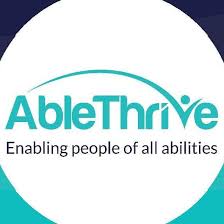|
(This blog tells my family's story. To see more, click "blog" at the top of this webpage.)
The logistics of swimming with quadriplegia evolved. Beth wore her one-piece suit to the Toledo or YMCA pool, but partway, up to her waist, with loose sweatpants over the suit and a T-shirt on top. In the locker room, I took off the shirt and pulled up the suit to put the straps in place. After a practice, I helped with the sweatpants over the wet suit before we headed home to shower. With improved, but not normal, balance, she asked to try the white plastic bench again. It worked with my help and we happily gave away the cumbersome metal shower chair with the rails. Five months after our Seattle trip, Beth achieved what I thought would be impossible. I watched at the YMCA pool as she advanced forward on her stomach for the entire 25-yard length for the first time, her arms working wildly below the surface but advancing at a snail’s pace. Her legs dragged behind. She conquered the basic balance of forward motion—without approximating a swim stroke. I expected her to stop at the wall after the 25 yards. Instead, she took only a moment to take a bigger breath before pushing off with her arms and going a little farther. Back on the wall to rest, she flashed a happy smile my way. Priceless. I returned her smile. All of my worrying and waiting for her optimism to plunge into depression had been wasted. Thankfully. For Beth, the achievement was only a small step toward a bigger goal. At the swim practices that followed, she worked on increasing the forward distance. And tried to add the arm movements of the butterfly, which seemed more doable at first than the breaststroke and freestyle. Her attempts to circle her arms out of the water while moving forward resembled a clumsy, erratic butterfly. Her backstroke had started in a similar way before finding a regular rhythm. I admired her tenacity, but I wasn’t sold on her mission to get better and swim all the strokes. No one knew how far she could go. I expected an impassable physical barrier to abruptly halt her progress. Not Beth. Legs and hands that didn’t work were a given. She accepted that her damaged arm and trunk muscles would not strengthen nearly as easily or nearly as much as perfect ones. Willing to wait weeks and months for small bits of progress, Beth tapped into a well of stubborn teenage persistence.
0 Comments
Leave a Reply. |
Cindy KolbeSign up for my Just Keep Swimming Newsletter by typing your email address in the box. Thanks!Categories
All
Archives
November 2022
|


 RSS Feed
RSS Feed











